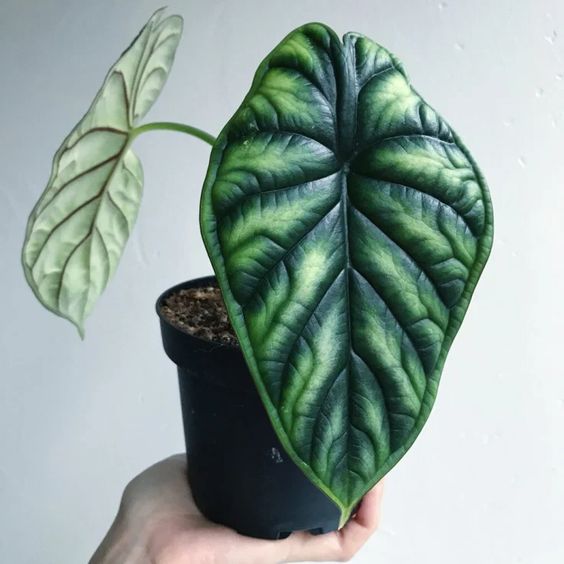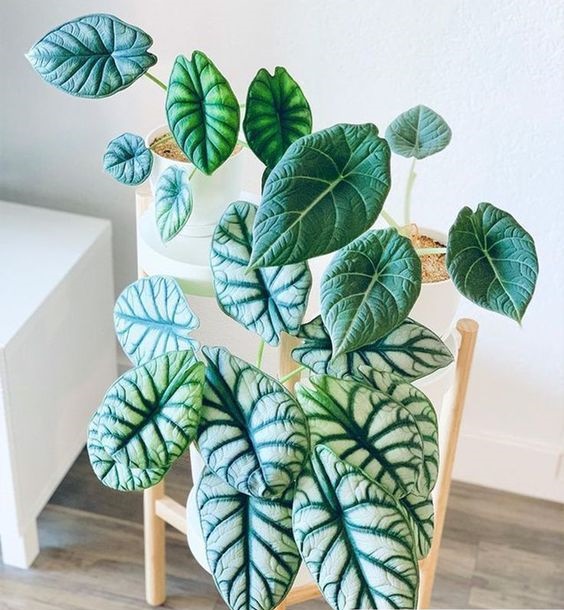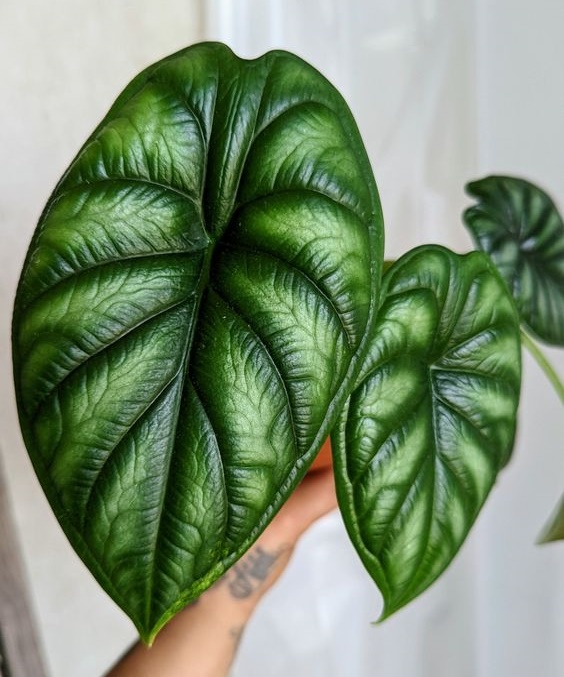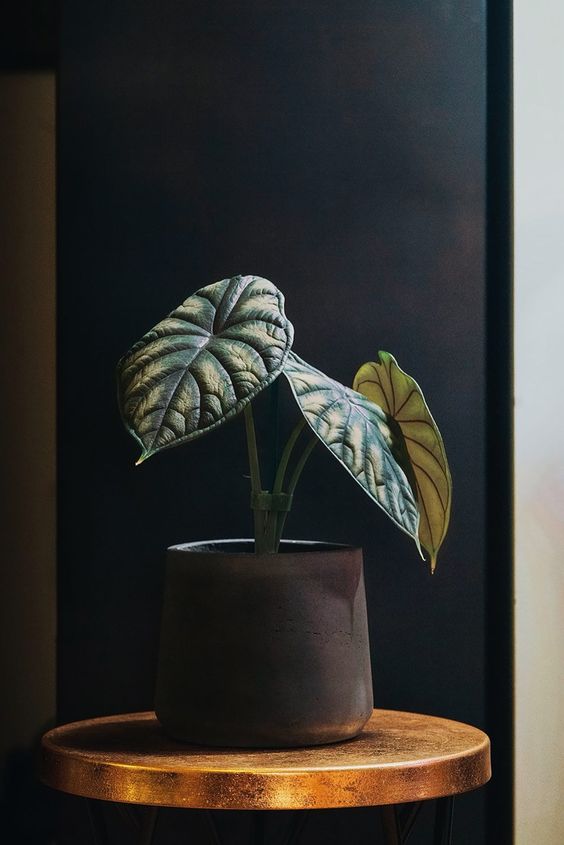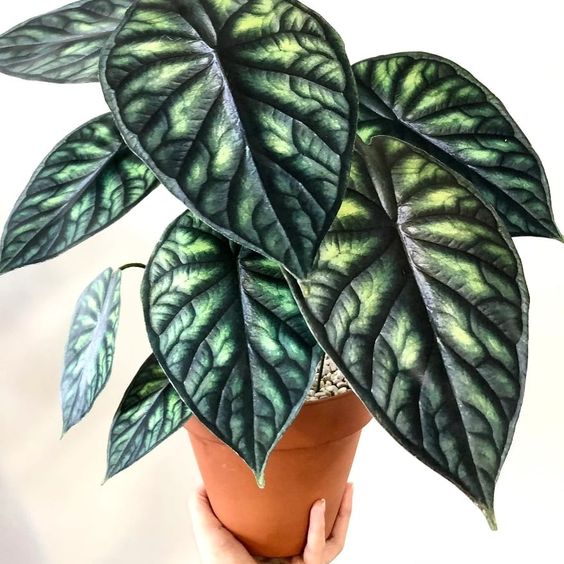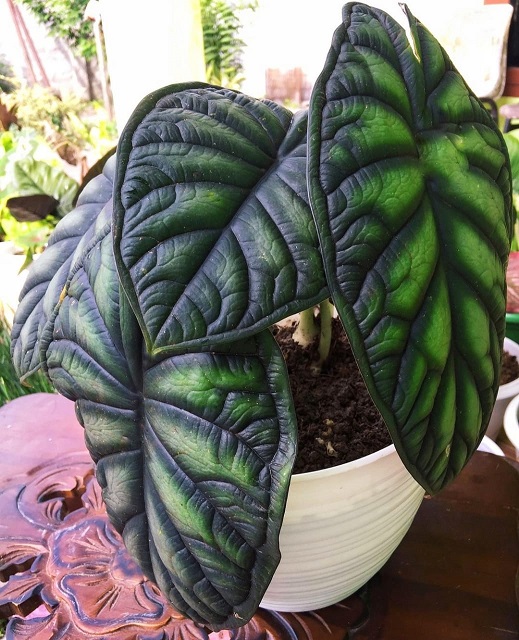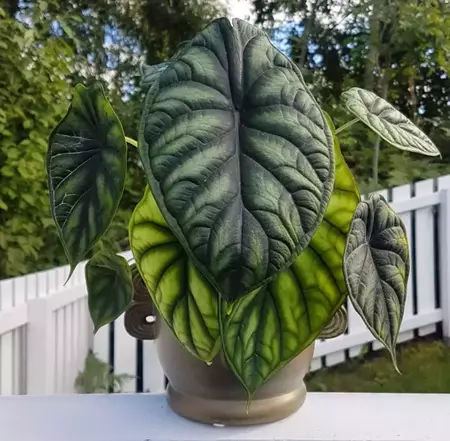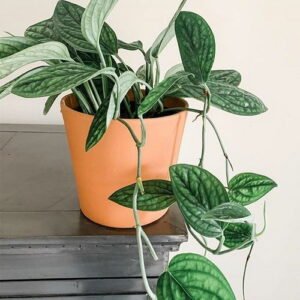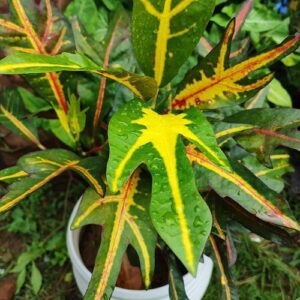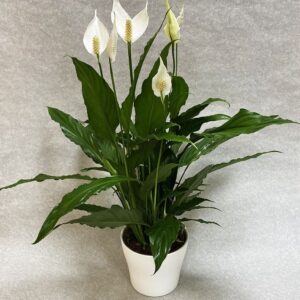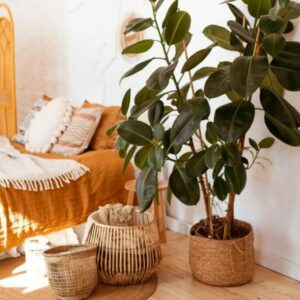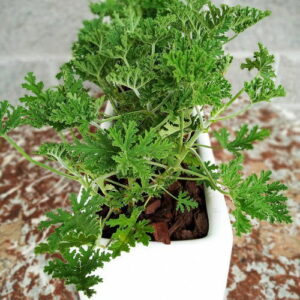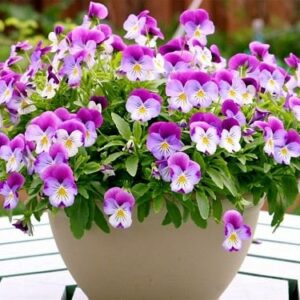| Scientific Name | Alocasia baginda ‘Dragon Scale’ |
| Origin | Borneo |
| Light Requirements | Bright, indirect light. Direct sunlight will scorch the leaves. |
| Watering | Water once the top 2-3 inches of soil feels dry. Avoid overwatering at all costs, as this is the cause of many problems. |
| Soil | A chunky, well-draining potting mix is essential. A mix of equal parts perlite, orchid mix, and coco coir works well. |
| Temperature | 55°F (13°C) to 80°F (27°C). Cool temperatures can trigger dormancy. |
| Fertilizer | Low fertilizer requirements. A half-strength, balanced fertilizer applied every six weeks from spring to early autumn is a good regime. |
| Humidity | High humidity is strongly recommended. 60-80% is ideal. |
| Flowering | Produces small purple spathes that pale beside the magnificent foliage. Consider pruning blooms to conserve the plant’s energy for foliage growth. |
| Pruning | Low pruning requirements. Prune off dead or damaged foliage. Remove dead plant material from the pot to reduce the risk of pests or disease. |
| Propagation | Alocasia Dragon Scale is best propagated by division of tubers. |
| Re-Potting | Avoid repotting unless necessary. Very sensitive to being disrupted. |
| Diseases and Pests | Aphids, scale, mealy bugs, and spider mites are the most common bugs. Early identification and treatment is an important aspect of Alocasia Dragon Scale care. Leaf spot diseases are fairly common. Prune all affected foliage promptly. |
| Toxicity | Toxic if ingested and can cause dermatitis on skin contact. Take great care with pets and children. |
| Where To Buy | Buy Alocasia Dragon Scale online at Etsy (I buy most of my houseplants from Etsy). |
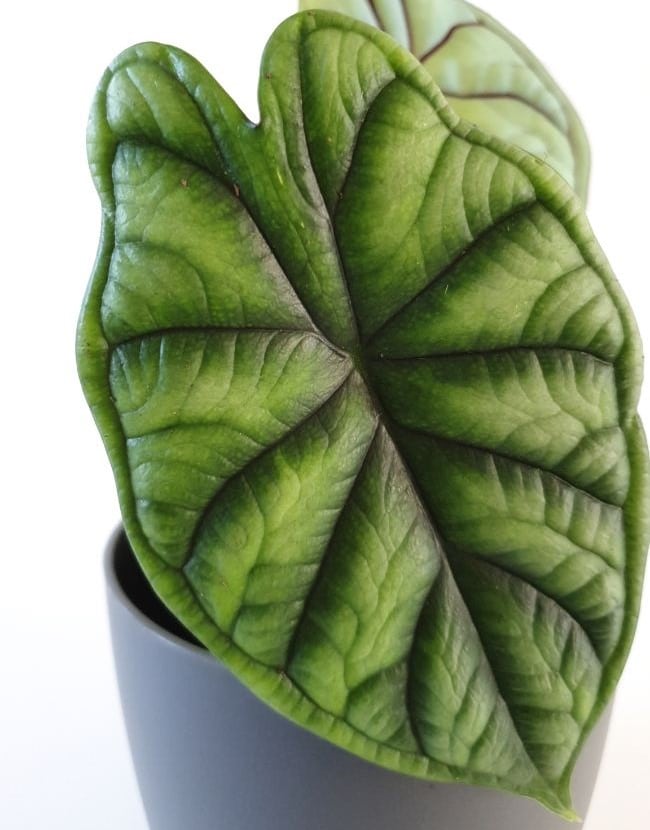
The best lighting for a Dragon Scale is bright but indirect. Direct sunlight will scorch the foliage. They can thrive close to a sunny window if kept out of direct sun, or in filtered sunlight behind a sheer curtain.
I keep mine approximately 2 feet from a north-east facing window, but move it closer to the window in winter to maximize lighting.
Some tips:
- Rotate the plant to keep growth balanced. Turning the pot 90º clockwise every time you water your plant is an easy method.
- Outdoors, the plant needs a shady spot that is protected during the heat of the day.
- Artificial lighting is effective.
How To Water Alocasia Dragon Scale
Jewel Alocasias such as Alocasia Dragon Scale generally don’t require as much water as species outside their group. They like to quickly absorb water as it drains immediately from the soil.
The general recommendation is to allow the top two to three inches of soil to dry before rewatering. Adjust to fit your plant.
When you water, soak the soil thoroughly to:
- completely saturate the soil, and
- flush the soil of residual fertilizer and contaminants.
Over-watering, wet leaves, and sodden mix can promote root rot and fungal infections. Water your Alocasia Dragon Scale almost as if it were a succulent.
Fluffy, Chunky Soil
Properly watering your Alocasia Dragon Scale actually begins with the soil. The mix must be chunky enough to drain quickly so their oxygen-loving roots can breathe.
One recommended soil mix is an equal combination of:
- Perlite
- Orchid mix
- Chopped coco coir
You can add some peat, compost, or quality potting soil for fertility and to regulate water-holding capacity.
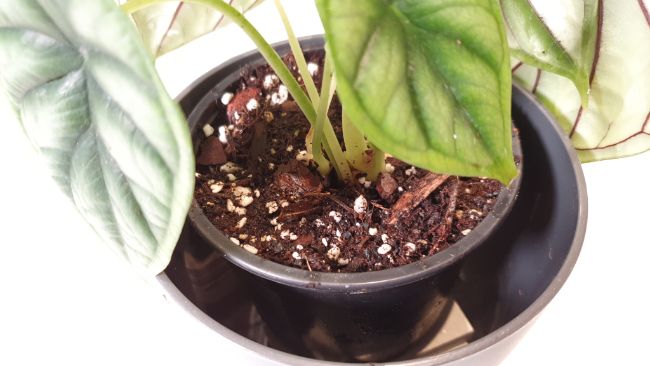
Alocasia Dragon Scale Humidity Requirements
You probably realize most Alocasias think they’re still in a rainforest and crave insanely high levels of humidity – like 80% or so. The question for growers outside tropical climates is how well an Alocasia Dragon Scale adapts to lower levels.
The answer varies, but some growers report success in humidity as low as 40%; though, these owners may have an exceptional watering program or light that makes their plant more resilient. Happy humidity levels begin at about 60% for your Alocasia Dragon Scale.
If you have average humidity, placing water-filled trays near the plant or grouping it with other tropicals can bump up the levels slightly. To reach ideal humidity levels, you’ll probably need a room humidifier (or greenhouse).
I run a humidifier during the winter months to counteract the drying effect of central heating and keep humidity levels above 60%. I use a digital humidity meter to monitor humidity levels, which helps me decide when extra measures are necessary.
If you’d like more information, this article covers the best ways to increase humidity for your houseplants.
One possible consideration is a kitchen or bathroom with sufficient light. These locations have elevated humidity and regular steamy periods.
It’s hard to say whether soil, watering or humidity is the most important aspect of Alocasia Dragon Scale care. All are crucial to ensuring your plant remains in good condition.
Temperate Range
The ideal temperature range for your Dragon Scale is 55°F (13°C) to 80°F (27°C). Bring plants inside well before the first frost.
Cool weather can be a trigger for dormancy. The plant will stop growing and start to look ragged … if this happens, let it languish peacefully with minimal water until it wakes up. Begin normal care when you see new growth.
Keep your Alocasia Dragon Scale well away from any hot or cold drafts, as this will cause considerable stress for your plant, resulting in yellowing leaves and brown leaf tips.
How To Fertilize Alocasia Dragon Scale
You don’t need to provide much extra fertilization to provide great Alocasia Dragon Scale care. Feeding with a balanced fertilizer once every six weeks from spring to early fall is a good routine; use a half-dilution of the label’s recommended amount.
Because this plant is a light feeder, overfertilization is more common than undernourishment. Unused fertilizer toxifies the soil. The damage shows up on the plant as brown leaf tips and edges – but there’s an easy fix.
Flushing the pot washes residual fertilizer salts and other toxins from the soil. Simply run extra water through the soil and let it drain well. Repeat one or more times. Flushing the soil is an excellent practice to do every few months.
For more information about how to safely and effectively fertilize your houseplants, this article covers everything you need to know.
Minor Flowering
Alocasia Dragon Scale is one of those species which can bloom without anyone noticing. It produces small purple spathes that pale beside the magnificent foliage.
Many growers snip the flowers to conserve the plant’s energy. You can do this at any time; it won’t hurt the plant.
Simple Pruning
The only pruning needed on this plant is to remove dead and dying leaves and stems. This minimizes the chance for decaying material to spread disease and attract pests.
Use sterile tools – wipe them with isopropyl (rubbing) alcohol – and cut the affected stem near the base.
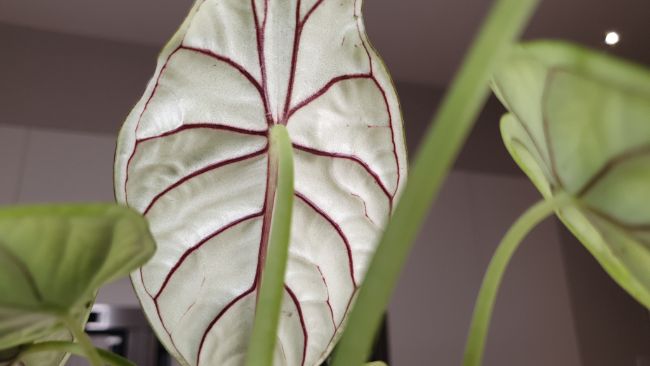
Alocasia Dragon Scale Dormancy
Dormancy is an important aspect of Alocasia Dragon Scale care to be aware of. It usually occurs in response to reduced light or temperatures and is most likely to happen in winter, but can happen at any time of year. You may see your plant stop growing and some of the existing leaves may deteriorate or die.
Let the soil almost fully dry before watering, and ensure moderate light and temperature levels. Your Alocasia Dragon Scale will start growing again in a few months.
Alocasia Dragon Scale grows from thick, nutrient and water-containing tubers beneath the soil. Even if all the leaves die back, do not dispose of your plant. Simply provide moderate conditions and have patience until your plant starts growing again.
When To Repot Alocasia Dragon Scale
It won’t surprise you that the touchy Alocasia Dragon Scale doesn’t like being repotted. Repotting is literally a groundbreaking event in a plant’s life; Alocasias can lose their leaves and go dormant after a repotting. Avoid doing it unless absolutely necessary.
Spring is the best time to repot. If the plant has outgrown its old container, replant to a pot just one size larger, or one or two inches wider in diameter. Overpotting can lead to overwatering.
Propagation By Division
Alocasias don’t propagate through leaf or stem cuttings; instead, they form offsets and clumps that can be divided and grown separately.
The best time to propagate a Dragon Scale is when you repot it.
Here are the steps:
1. Gently unpot the plant. If you intend to divide the plant, gingerly shake away excess soil from the roots to expose the root structure.
2. Identify the tuberous clumps and offsets on the plant’s roots. Untangle and detach parts you want to reproduce, making sure each plantlet has roots. You can use sterile tools to cut tangled roots apart.
3. Plant each new plant into loose soil similar to the parent’s mix. Give them moderate light.
Optional: Consider covering the babies with clear plastic to raise humidity and help keep the soil evenly hydrated. If you’re having trouble propagating your Dragon Scale, this step can help.
4. Water carefully and watch for signs of rot. It’s important to discard failing specimens before they become a breeding ground for infection.
5. Increase the light when you see new leaves forming, and treat them as adult plants.
Alocasia Dragon Scale Care Tips
Alocasia Dragon Scale can adapt to average humidity, but they really like higher levels. Raising humidity is a panacea for many of their woes.
- Giving your plant a shower at watering time is a healthy practice. It cleans away dust and pests. Showers also discourage spider mites.
- Water quality matters to an Alocasia Dragon Scale. They react to impurities like high mineral content, fluoride, or chloramines with discolored leaves. Rainwater or purified water can eliminate this stressor.
- Sometimes this Alocasia does its own thing. Follow the plant’s lead. If it goes dormant, move it out of bright light and cut back on watering. If it’s growing, give it light, water, and a light feeding routine.
- Expect some downtime after relocating a Dragon Scale. They need time to acclimate, even if the new spot is only ten feet from the last location. Don’t increase water or fertilizer in an attempt to spur the plant into action.
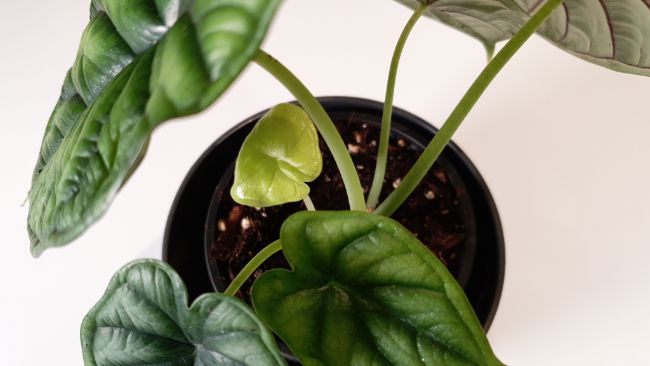
High Toxicity
This isn’t a pet- or child-friendly plant, sadly. It contains insoluble calcium oxalate which crystallizes into minuscule daggers that can irritate and even disrupt the digestive system.
The main danger is swelling from the reaction to the calcium oxalate. Alocasia Dragon Scale can also cause localized skin irritation or dermatitis.
Varieties
One popular and flashy variation of the basic green Alocasia Dragon Scale is the Alocasia Silver Dragon. Bright silvery variegation covers much of its leaves.
There’s also a cultivar called an Alocasia Pink Dragon with rosy-hued stems. It’s not actually a variety of Dragon Scale, though, just a close cousin.
Pests
These poisonous Alocasias aren’t exactly pest magnets, but their fat, juicy stems are inviting. The main pests they attract are aphids, scale, mealy bugs, and spider mites. Spider mites in particular are persistent once established.
You can avoid most infestations by spraying the plant thoroughly with warm soapy water every month. The best remedy is prevention!
The same soapy treatment can prevail if your Alocasia Dragon Scale already has an infestation. Insecticidal soap kills pests on contact, so cover the plant thoroughly in the solution. Repeated treatments are usually needed.
Disease
Leaf-spot is the most prevalent disease, or rather, symptom of many diseases. It can be caused by a number of pathogens including Xanthomonas bacteria. Minimizing excess moisture from overwatering, misting, or wet leaves will help prevent infection.
If you suspect disease, isolate the plant to avoid further spread. Safely discard affected leaves and sterilize your tools.
Common Questions
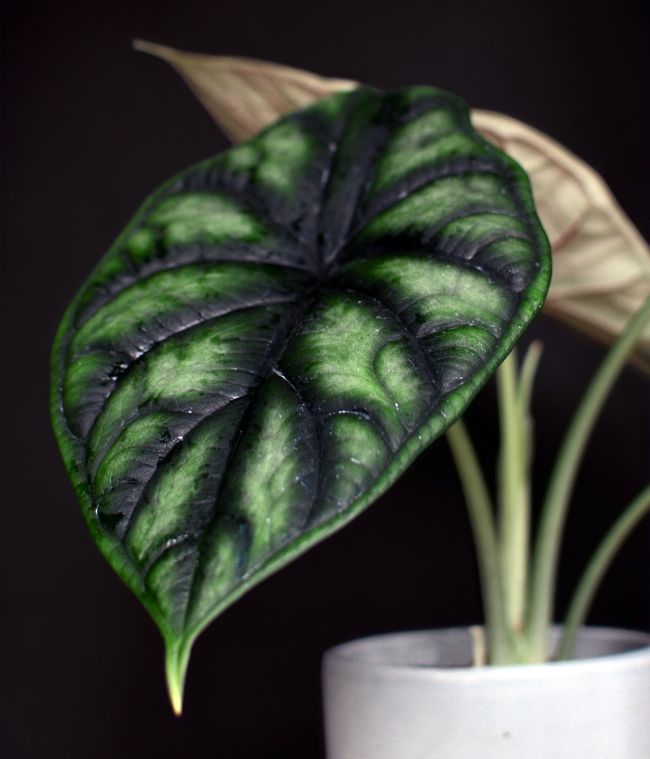
Why Is My Alocasia Dragon Scale losing leaves?
Acclimation to a new location, is a common cause of leaf loss shortly after purchasing an Alocasia Dragon Scale, whether coming from the nursery or simply relocated within your home. It isn’t unusual to lose a few leaves after a major move. The overall rule is not to fertilize or otherwise disturb the plant until you see new growth.
Stress from relocating could cause some leaf discoloration or loss, but it should stabilize quickly with good care.
Why Is My Alocasia Dragon Scale Dying After Repotting?
Alocasia Dragon Scale is quite sensitive to any change in its growing conditions, so it is common for them to stop growing or deteriorate a little after repotting.
Take care not to repot into an excessively large container, as this is likely to increase the risk of overwatering. Excess soil holds water and takes longer to dry, so continuing your old watering pattern could be overwatering the plant.
Why Are My Alocasia Dragon Scale Leaves Turning Yellow?
Yellow leaves on an Alocasia Dragon Scale is one of the most common problems and is most commonly due to overwatering. Make sure you let the top few inches of soil dry out before watering. Also, make sure the soil is loose and very well-draining, and the pot is not larger than it has to be.
Your Alocasia Dragon Scale can also get yellow leaves due to excess direct light, which will cause scorch marks on the leaves initially, before progressing to entire leaves that turn yellow or brown and die.
Make sure to check your Alocasia Dragon Scale carefully for any signs of pests. Aphids, mealybugs, spider mites, and a number of other pests will feed on the leaves and petioles of your plant, resulting in yellow spots on the leaves. This will eventually cause entire leaves to turn yellow.
Why Is My Alocasia Dragon Scale Getting Brown Tips?
The most common cause of an Alocasia Dragon Scale developing brown leaf tips is low humidity. Make sure to monitor humidity levels in your home and try to keep humidity above 60%.
Brown leaf tips and edges can also be caused by acclimation, drafts, high temperatures, or even overwatering if root rot has set in.
Some of my Dragon Scale’s leaves look “wet.” They have irregular dark areas on the leaf back that don’t show through on the front.
This sounds like edema, a condition related to clogged water transmission in leaves. It’s unsightly and points to an over-hydrated condition, but edema is not harmful or contagious. Future growth is not jeopardized. If you’d like to alleviate the symptom, increase air circulation and let the soil dry out more before rewatering.
Last Word
I hope I’ve covered all your questions about Alocasia Dragon Scale care. It’s a plant that I’m still left speechless by whenever I look at the stunning foliage. Although quite pricey to purchase, and fussy to look after, it’s very much worth the effort to grow this fabulous houseplant.
If you’re looking to purchase one of these wonderful plants, I’d recommend buying your Alocasia Dragon Scale online from Etsy. This is where I buy all of my less common houseplants and have been hugely impressed by the care and attention that goes into shipping these plants in perfect condition.
